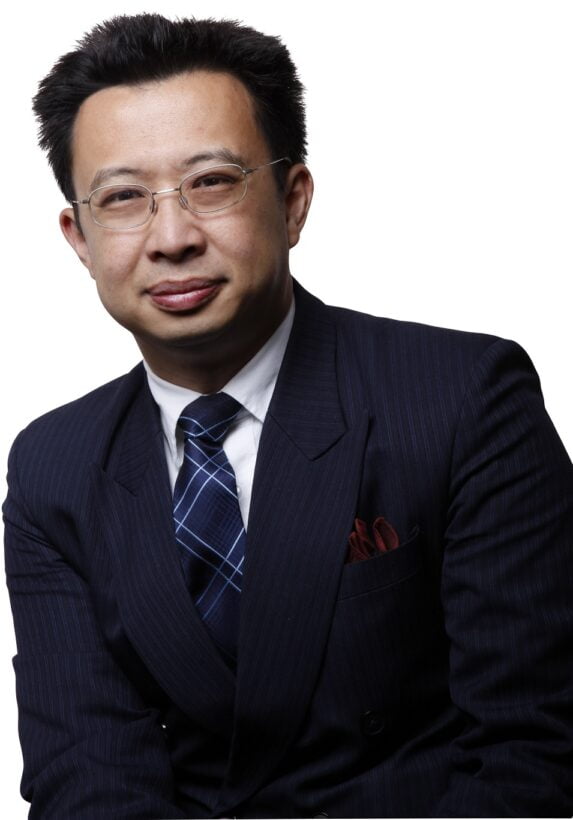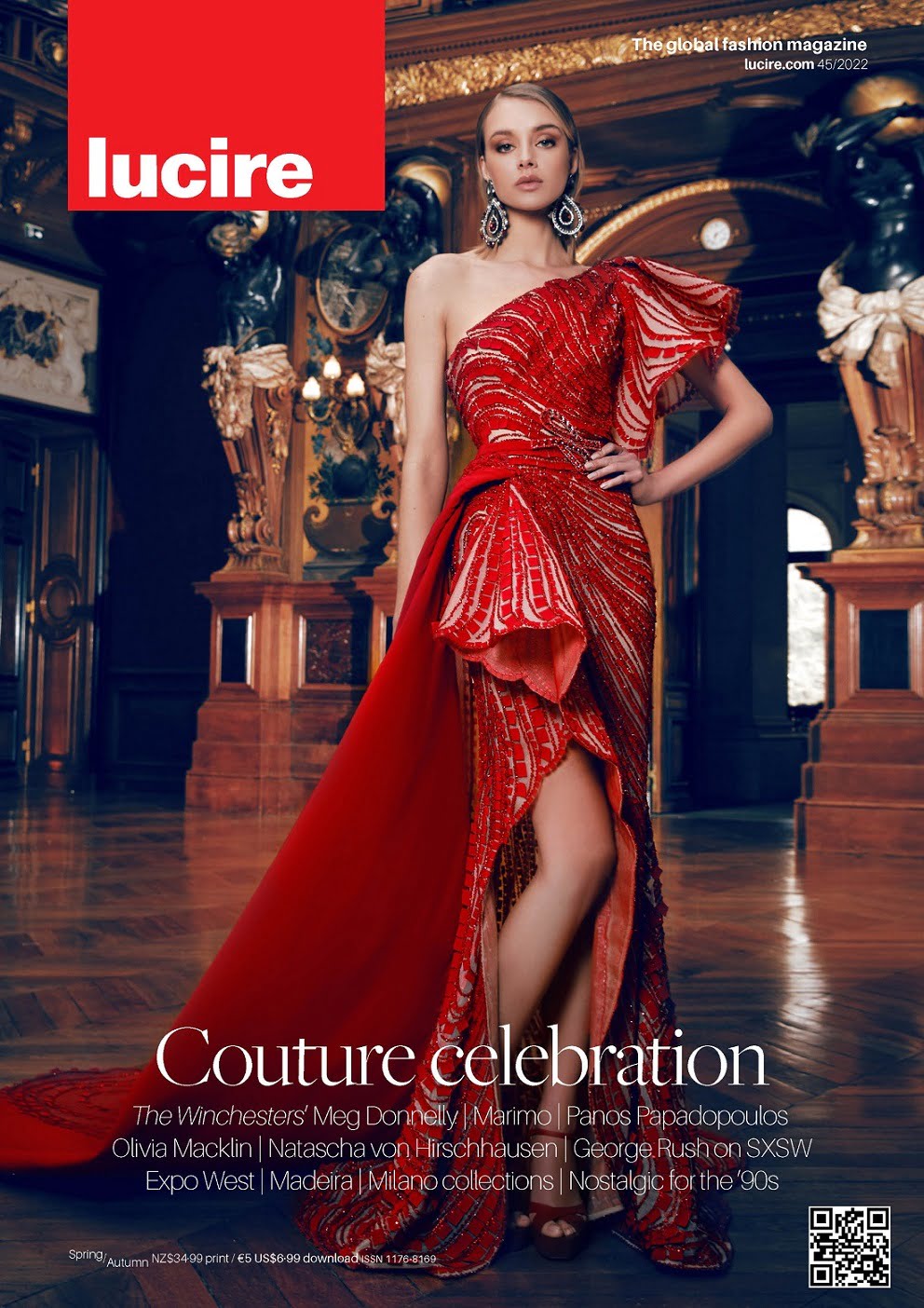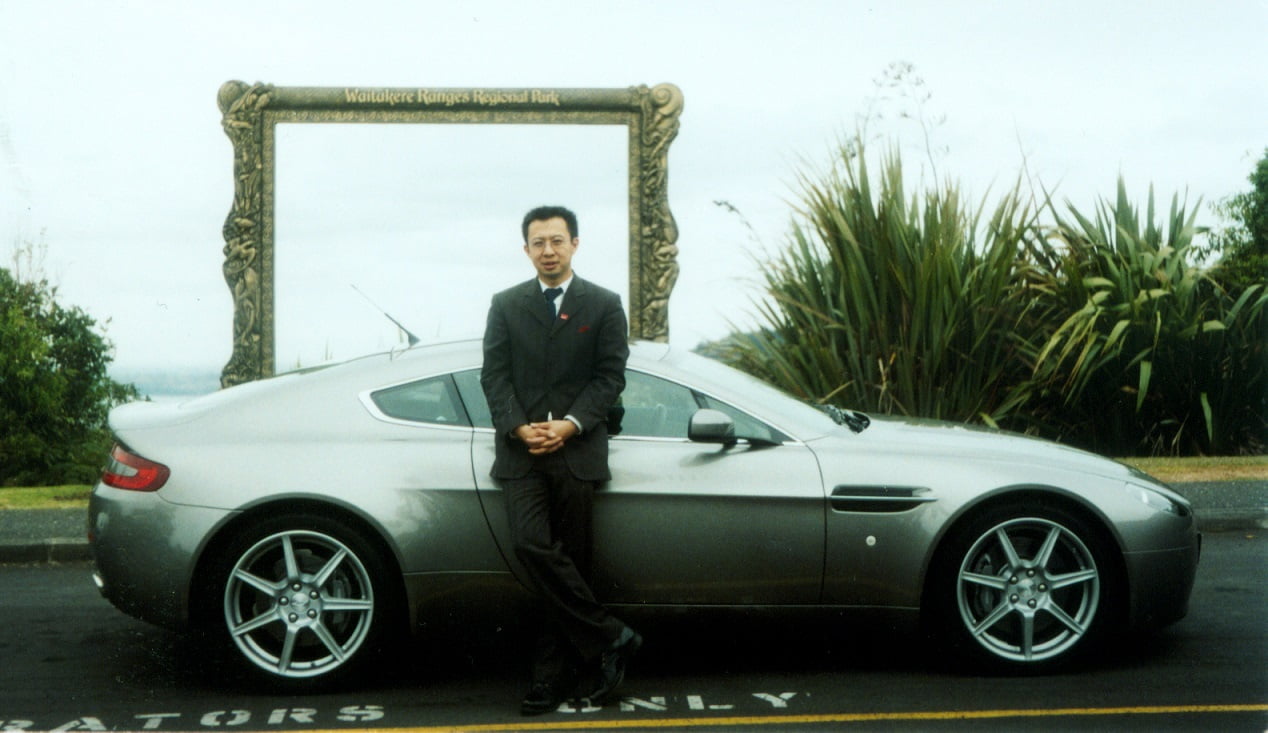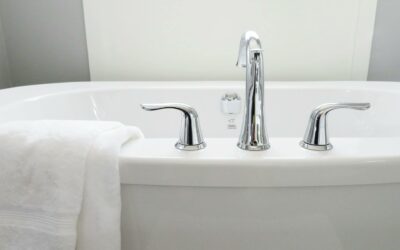Interview with Jack Yan, New Zealand publisher, designer, and businessman.
Founder of several business ventures including global fashion magazine Lucire and co-chair of humane branding think-tank Medinge Group
Jack, thanks for making time for us this evening. We may as well get stuck into things; can you give us a glimpse into your background?
I was born in Hong Kong and moved to New Zealand at four years old.
As an immigrant child, I wanted to hold on to my identity, who I was before I came here. It was a big thing for me, which later fed into my work in identity, type, and design. I was always very interested in drawing and creativity from a young age, before I got here.
Unknowingly, I became New Zealand’s first digital typeface designer in the 1980s, doing bitmaps for personal use, then creating commercial designs by the time I was in my late teens.
I went to university in New Zealand although, at that time, it wasn’t possible to do a degree in design, so I ended up doing law and marketing. Fortunately though, it later turned out that marketing came in handy for my involvement with Medinge.

I completed my master’s degree in branding. My thesis was on branding and identity.
Since the early ’90s when the World Wide Web was starting to become a big thing, I instantly knew I’d love to do a fashion magazine on the internet.
My first job was at a print agency in Wellington, doing basic stuff like menus and layouts. My goal back then was to one day become the art director of Vogue. I was inspired by Australian magazines Studio Collections and, later, Black + White, published by Marcello Grand.
When I designed for the web, I tried to re-create the look and feel of a print magazine, because I believed that the way people read and absorb didn’t change too much between media. If you read around 60 characters per line in print, you’d probably be comfortable reading 60 characters per line on the web. Back then, many web designers didn’t obey these rules, and there’d be massive, wide columns that were way over 60.
I started to think about how to make a fashion magazine very early on. I started a magazine called CAP (CreateArtPrint) which was distributed on online bulletin boards. That was my dry run, learning how to design and publish in a digital platform, implementing the skills I learned in marketing, branding, and design.
I was surfing the web there was so little on branding at the time. Jerry and David were still running Yahoo from their garage. I found a guy called Chris Macrae, who was writing about brands, and we corresponded a bit. His dad was the deputy editor of The Economist. A little while after that, he got in touch with me, to help create the foundation content as lead authors for a site called All About Branding.
In April 2002, Chris asked me if I wanted to come to Sweden as there was a conference behind held there. Sweden, especially back then, was a hub for incredible web magazines and talents of that kind, so I went and that’s what kicked off my introduction to Medinge Group.
I remember in Sweden sitting next to Nicholas Ind, whose work I cited in my master’s thesis. There I was, talking to the guy I wrote about years before, and being treated as a peer. That contributed to what would then become this 20 year and counting association with Medinge Group.
We all know Lucire, your fashion magazine. Did you always have an interest in fashion, or did it develop from previous interests?
I think I loved design more than just fashion in isolation. Anything to do with design, be it fashion, cars, typefaces, etc.
I was also really interested in trends more than fashion specifically. Again, in any area.
For example, in the late 2010s, Mazda had big C-pillars on their 3 hatchback, which were bulky and made passengers feel enclosed, as if people wanted to be sheltered in their cars and feel a sense of security. To me, that had a lot of parallels to the economic downturn and recession of the early 1970s. When the world began hitting tougher times with the pandemic, I thought they had been foreshadowed by trends like this.
Then you see the trends in fashion—mini-skirts were the rage in the 1960s, and A-line dresses, used to symbolise freedom. Then you get to the 1970s, it was very Laura Ashley; all the fabric looked like a kind of armour which lines up with the socio-politics during that decade.

So, I think that’s also what we do at Lucire, always keeping an eye of “what’s in fashion” and trying to figure out if it’s telling us anything about the world at large.
What’s your definition of sustainable fashion?
Fashion!… It’s a tricky area. There is a lot of greenwashing out there.
I think when it comes to sustainable fashion everything is important. Sourcing is important, finding things that aren’t going to have a negative impact on the world, no synthetics, smarter fibres, ensuring every stage of the supply chain and manufacturing process stands up to scrutiny.
Specifically, there’s companies like Paneros who have a good five-part model towards sustainable fashion.
Another company, La Katz, they’re good. They use sustainable dyes, natural dyes and other things that aren’t going to cause great impact on the planet.
In terms of manufacturing processes, you’d want to do that ethically by paying folks a working wage in a way that will also boost local communities, which are the bedrock for supply chains. That’s also important in sustainable fashion.
Other things, too, such as using as much as possible of a piece of fabric to minimise waste, thinking about packaging, carbon off-sets for dispatch, and recycled materials for packaging, etc.
So, to me, sustainable fashion is a holistic package; from the first step of sources, all throughout the supply chain, up to and including getting product out to the customer.
But there’s another big problem, too. We hear Greta Thunberg claiming older generations did a terrible job with the environment, and that’s true. Temperature rises because of my generation and the one before are facts. But is any generation any better?
Generation Z are very into Shein, a fast-fashion company from China. They ship in lots of packaging and are opaque in the information they provide about their processes.
Shein was, I think, one of the most downloaded apps in the world last week, way more than Amazon and behind Google Maps. They have millions of followers on Instagram and TikTok which only fuels this selfie culture, and the selfie culture fuels demand for Shein.
And how do you think we can change that?
Well, I’m not sure we’ve got the message out there that the fashion industry is one of the worst offenders of waste, in terms of how much ends up in landfill, water volumes required to make clothing, and so forth.
We have to start by educating consumers that there are limits to all of this.
If people now are interested in looking good for a selfie, then take selfies wearing something that’s good quality, that’s seasonless. Teach people that novelty is a drag.
Paneros Clothing is a good company for this. They’re into limited qualities, sustainable fabrics, and they aren’t fast-fashion or wasteful.
I try to reinforce this message through the pages in Lucire; focusing on generally ethical designers has become a mission for me over the past years. Trying to educate that true sustainability is what’s fashionable.
Is there a difference in your mind between ethical and sustainable fashion?
Ethical fashion may not be sustainable. A brand or company may be ethical in terms of its treatment of workers and suppliers but may not be sustainable in its processes.
It would be ethical to be buying nylon or polyester but then again not sustainable in the way it’s treated. I do believe there’s an overlap between ethical and sustainable though; I see them as two distinct circles that have commonalities in the middle but don’t fully overlap.
How would you describe Lucire’s point of difference? What makes it unique compared to other fashion magazines?
Well, for one, we’re not beholden to marketing budgets. Some of our revenue comes from licensing and so it ensures our independence. On top of that, I think our content is intelligent, and we have an intelligent audience who likes to read and who loves fashion.
Our typical fashion features are about 1,500–2,000 words in length, because I like to put the subject into a broader focus of what’s happening out in the world, not just in terms of a trend but where we are in a point of our collective history; a snapshot of where we’re at.
We’re not about ‘news,’ people don’t want news in a magazine. I think they want considered content, in-depth features, not fluff pieces.
A comment I used to hear most from our readers was that they read the magazine cover to cover.
It’s also a visually stunning magazine, with the photographs, designs, layouts. But to ensure people are engaged enough to want to read it cover to cover is still the working ethos of our magazines today.
Can you explain how the partnership with UN Environment Programme and Lucire came about?
It was thanks to Chris Macrae. I left that 2002 Medinge meeting really inspired and we talked about doing a book that was carbon neutral in 2003—back then not many people knew about carbon neutrality.
Chris is a great networker and had lots of contacts.
Through Chris, I met Will Rogowsky who back then was with the UNEP and we just started talking. I had told him how I’d love to do something in sustainable fashion and would pledge to do this, bearing in mind Lucire was a commercial magazine.
The UNEP thought it was a good idea and said yes to the concept, so we then became their first official partner.
We ended up doing UN Radio shows which went all over the world discussing the partnership. At the time, with the Alexa ranking on the internet, Lucire jumped to the 12,000th-ranked site in the world; before the UNEP partnership we were the 43,000th.
It helped give Lucire’s readership a major boost and that momentum then helped take us to print. It helped put Lucire into the limelight.
Do you think there’s been progress in the last decade in sustainable fashion?
Of course, there has been progress. All the tools developed, certifications, a little bit more transparency around information than there used to be. There’s also demand, people want to be seen doing the right thing, but then again, we’ve still got Shein.
In some respects, it’s two steps forward and two steps back. Jay Leno had a good quote: “In America, we like everyone to know about the good work we’re doing anonymously.”
Although there’s been progress, there is still some way to go with elevating consciousness. There’s just still so much waste. The demand for sustainability has to come from consumers, especially from the first or second worlds; we have to consume more consciously.
The COVID-19 pandemic didn’t help either, despite restrictions on our ability to consume. Once the world came out of lockdown it was then like “let’s catch up on the consumption we missed!”
All the misinformation on social media sites also reverses all the good work others out there have done and are doing. These forces still exist, with populous support, which undermines progress.
There has to be some way to reduce the impact of social media. Governments have to have more teeth when it comes to this kind of thing, to regulate or simply not allow advertisement tracking on social media.
Is the industry sincere? What about greenwashing/conscience-washing in the industry?
Shein is the best example of insincerity in the industry. There are just too many companies still pumping out crap.
TopShop represented another race to the bottom. It’s harmful to the fashion industry as a whole. There needs to be significant re-shaping of the industry.
What do you think needs to be done to overcome some of those structural challenges?
Serious education. Making sustainable fashion cool, worth taking a selfie in.
So many companies that use social media run the whole campaign of “we’ll give you this free if you promote us to your friends.” But then you look at the statistics, 45% of Instagram accounts are fake or inactive, and I reckon at least 1,000 million Facebook accounts are also fake.
The sooner we move away from those models the better. There are more credible, organic ways of doing things. People will then want to start seeing things with more high-end sites, high-end products and shift away from whatever is just being supported by the big tech companies.
What is Lucire and your other business’ mission statements? This may be compounded but what are you motivated by and how does the Medinge Group impact on your day-to-day activities?
I’m not a big fan of mission statements; people always put one up, but they don’t follow it.
On the spine of Lucire print editions, we have these words, and I think it sums us up the best: “Independent, inspirational, intelligent.”
I am a fan however, of having slogans. For one of my other companies, Jack Yan and Associates (JY&A) our slogan is “creating harmony.”
JY&A is independent and there is also some overlap to try to inspire and be intelligent with that outlet.
Medinge Group also definitely has an impact. With Medinge we try to uphold ideas of humanistic branding, brands with a conscience, trying to not only highlight others that adopt the same approach but follow these ideals and practices ourselves.
If there’s one piece of advice you could give Lucire’s readers who are interested in sustainable fashion, what would that advice be?
Keep reading Lucire!
Shift the emphasis of what’s cool into what’s responsible. That it’s much cooler to be photographed to do a selfie and be seen in good quality, sustainable product than to be photographed in junk by Shein or any fast-fashion label.






It’s true, education is a key foundation for change and we need more of it!
With the changes we rae facing, it’s not only to learn but also to unlearn and relearn!… Again and again!
very interesting insight, I love reading the interviews!
Thank you very much Francesca!
Interesting interview! I never knew Jack Yan had such a diverse background. #Impressed
I have to disagree. Jacks journey may seem inspiring, but its just a facade. His diverse background is nothing more than a gimmick to gain attention. Ive seen through the smoke and mirrors.
If I wanted attention, I’d have done more than a handful of interviews over the last few years. There are no smoke and mirrors here, ‘Wells’. Maybe don’t light fires inside your own space?
Jack, your fashion journey sounds amazing! Sustainable fashion is the future, right? ♻️
One hundred per cent, Sydney! As someone much wittier than me once said, ‘There is no Planet B.’
Jack, your background is so diverse! Its inspiring to see someone excel in multiple industries. #Multitalented
Thank you, Novah, I’ve been extremely fortunate to have gone where my interests have taken me, and be incredibly lucky in some cases with my timing.
Sustainable fashion is the way forward! Jack Yans insights are enlightening.
Sorry, but I disagree. Sustainable fashion is just a trend for the privileged. Real change comes from addressing systemic issues in the fashion industry. Jack Yans insights may be enlightening, but actions speak louder than words. Lets focus on tangible solutions, not just empty praises.
I believe it’s a choice, Lyla, without much penalty in price when you seek quality. However, you are right that the issue is systemic. And we are all part of the system, so don’t give up. I’m trying to effect change in my corner—as a member of the media. Twenty-plus years of promoting sustainability is my tangible contribution. What is yours?
Jack Yans insights on sustainable fashion are intriguing. Whats your take on it?
Jack Yans insights on sustainable fashion are thought-provoking. I believe its time for the fashion industry to prioritize ethics over profit. Its about time we start holding brands accountable for their environmental impact. Lets make sustainable fashion the norm, not the exception.